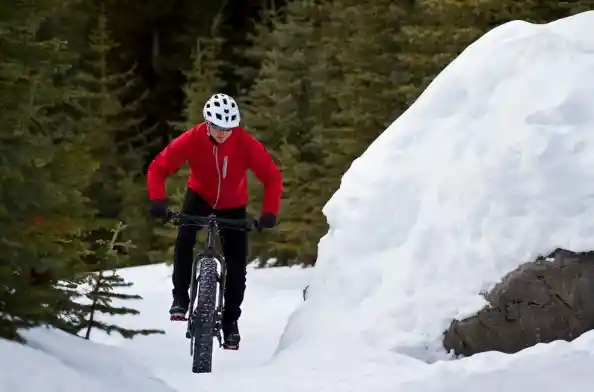Snow Rider: Embracing the Winter Wonderland
Winter brings an allure that captivates many adventure enthusiasts, drawing them to the snowy expanses where they can indulge in various snow-riding activities. Snow rider offers a unique blend of thrill and serenity, whether it’s the exhilarating speed of a snowmobile, the graceful descent on skis, or the creative maneuvers on a snowboard. This guide delves deep into snow riding, exploring its history, essential equipment, techniques, and best practices to ensure a safe and enjoyable experience.
The Evolution of Snow Riding
The origins of snow riding trace back thousands of years, with ancient civilizations in Scandinavia and China using primitive skis as a mode of transportation. Skiing has since become a popular recreational and competitive sport, with disciplines like alpine skiing, cross-country skiing, and freestyle skiing captivating enthusiasts worldwide.
Snowboarding, a more recent invention from the 1960s, revolutionized winter sports by introducing a new way to descend snow-covered slopes, combining elements of surfing and skateboarding.
Snowmobiling, another facet of snow riding, emerged in the early 20th century. Originally designed as a practical means to traverse snowy landscapes, snowmobiles have become synonymous with adventure, allowing riders to explore remote areas quickly.
The Snow Riding Experience
Snowboarding involves riding down slopes on a single board with both feet secured in bindings. This sport offers unique freedom and creativity, allowing riders to perform tricks and navigate various terrains. Snowboarders often enjoy the thrill of carving turns, hitting jumps, and gliding through powdery snow.
Skiing: Skiing is one of the oldest forms of snow riding. Alpine skiing focuses on downhill descents, while cross-country skiing emphasizes endurance and navigating flat or rolling terrain. Freestyle skiing includes jumps, rails, and half-pipes, showcasing the sport’s versatility and the athlete’s skill.
Snowmobiling: Snowmobiling involves riding a motorized vehicle equipped with tracks and skis. This sport offers a different kind of thrill, combining speed with the ability to explore vast and rugged winter landscapes. Snowmobiling is ideal for those looking to cover significant distances or reach areas inaccessible by other means.
Essential Equipment for Snow Riding
The right gear is crucial for safety and enjoyment in snow-riding activities. Here’s a rundown of the must-have equipment:
Clothing: Layering is essential to staying warm and dry. Start with moisture-wicking base layers, add insulating mid-layers, and finish with waterproof and windproof outer layers. For protection, remember gloves, goggles, and a helmet.
Protective Gear: Helmets are essential for all snow riders to prevent head injuries. Additionally, wrist guards, knee pads, and back protectors can provide extra safety.
Activity-Specific Gear: Snowboards and skis should be chosen based on the rider’s skill level and the terrain they plan to tackle. Snowmobiles should be well-maintained and appropriate for the intended use.
Techniques for Safe Snow Riding
Safety should always be a top priority. Here are some fundamental techniques and tips to ensure a safe snow riding experience:
Know Your Limits: Be sure to push yourself beyond your skill level. Gradually progress to more challenging terrain as you gain confidence and experience.
Check Weather and Terrain Conditions: Always be aware of the weather forecast and the condition of the slopes or trails. Avoid riding in poor visibility or dangerous situations.
Mountain Etiquette: Respect other riders by yielding when necessary, staying in control, and following posted signs and rules.
Stay in Control: Whether skiing, snowboarding, or snowmobiling, always be able to stop or avoid obstacles. Maintain a safe speed and be aware of your surroundings.
The Health Benefits of Snow Riding
Snow riding is not only thrilling but also beneficial for your health. Depending on the activity, it provides a full-body workout, engaging muscles in the legs, core, and arms. The cardiovascular benefits include improved heart health and increased stamina. Additionally, outdoor time in nature boosts mental well-being, reduces stress, and improves mood and energy levels.
Top Snow Riding Destinations
There are numerous breathtaking destinations around the world for snow-riding enthusiasts. Here are a few must-visit locations:
The Rockies, USA: Home to some of the best ski resorts like Aspen, Vail, and Breckenridge, offering diverse terrain and spectacular scenery.
The Alps, Europe: Renowned for their extensive ski areas and charming villages, destinations like Chamonix, Zermatt, and St. Anton are popular among skiers and snowboarders.
Hokkaido, Japan: Famous for its powder snow, Niseko and Furano attract riders seeking deep, fluffy snow and unique cultural experiences.
British Columbia, Canada: Whistler Blackcomb is a top choice for snow riders, with vast terrain and a vibrant après-ski scene.
Minimizing the Environmental Impact of Snow Riding
While snow riding is exhilarating, it does come with environmental responsibilities. The construction and operation of ski resorts can impact local ecosystems, and the carbon footprint of snowmobiles and resort operations cannot be ignored. Here are ways to mitigate these impacts:
Support Sustainable Resorts: Choose resorts that implement eco-friendly practices such as renewable energy, waste reduction, and habitat conservation.
Responsible Recreation: Stick to designated trails and slopes to minimize habitat disturbance. Avoid littering and respect wildlife.
Carbon Footprint: Reduce your carbon footprint by carpooling, using public transportation, or opting for electric snowmobiles where available.
Snow Riding for All Skill Levels
For Beginners: If you’re new to snow riding, start with lessons from certified instructors. They can teach you essential skills and safety protocols, helping you build confidence. Begin on gentle slopes and gradually progress to more challenging terrain.
For Advanced Riders: Experienced riders can explore advanced techniques and terrains. This might include mastering jumps and tricks in terrain parks, tackling steep backcountry lines, or improving technical skills in challenging conditions. Always prioritize safety and consider taking advanced lessons to refine your skills.
Celebrating Iconic Snow Riders
The snow-riding community is rich in history and talent. Notable figures include:
Shaun White: An iconic snowboarder known for his multiple Olympic gold medals and innovative tricks.
Lindsey Vonn: One of the most successful alpine skiers, with numerous World Cup titles and Olympic medals.
Tucker Hibbert: A legendary snowmobile racer with numerous championships and a significant influence on the sport.
Conclusion
Snow riding encapsulates the essence of winter adventure, blending the thrill of speed with the beauty of snowy landscapes. Whether carving through powder on a snowboard, gliding gracefully on skis, or exploring the wilderness on a snowmobile, the joy and excitement of snow riding are unparalleled.
Equip yourself with the right gear, prioritize safety, and embrace the winter wonderland with respect for the environment. Snow riding is more than a sport—it’s a way to connect with nature, challenge yourself, and create unforgettable memories. You can also know about NBABite by going through that link.
FAQs
Is snow riding suitable for all ages?
Yes, snow riding can be enjoyed by individuals of all ages. Children as young as three can start learning with appropriate equipment and supervision, and there are options for seniors to enjoy gentler slopes and trails.
What should I wear for snow riding?
Dress in layers to manage warmth and moisture. Begin with moisture-wicking base layers, add insulating mid-layers, and finish with a waterproof outer layer. Essential accessories include gloves, goggles, and a helmet.
How can I improve my snow riding skills?
Regular practice, taking lessons from qualified instructors, and gradually tackling more challenging terrain can help improve your skills. Watching instructional videos and learning from experienced riders can also be beneficial.
Are there any environmental concerns associated with snow riding?
Snow riding can impact the environment through habitat disturbance and carbon emissions. To mitigate these impacts, you can practice responsible recreation, support sustainable resorts, and minimize your carbon footprint.
What should I do in case of an emergency while snow riding?
Carry a fully charged phone and emergency supplies such as food and water, and know the safety protocols for the area you are in. Stay calm, assess the situation, and seek help if needed. Familiarize yourself with the resort’s or trail’s emergency procedures.







One Comment